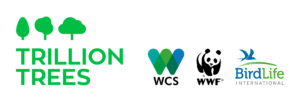Peru hosts five species of sea turtles that feed in its nutrient-rich waters. All five of these have been documented to have high levels of interaction with gillnet and longline fisheries in Peru’s waters and Peru has been identified as a globally significant high-risk zone for sea turtle bycatch.
Bycatch is a significant threat to Eastern Pacific leatherbacks, South Pacific loggerheads and the critically endangered Eastern Pacific hawksbills. Peruvian fisheries are estimated to catch tens of thousands of turtles per year, mainly in gillnet fishery.
Even though conservation efforts in nesting beaches have essentially eliminated threats from human consumption of eggs, experts agree that bycatch is the most serious threat to sea turtles, particularly in their feeding grounds in Chile and Peru.
To address this problem bycatch education devices have been developed to reduce the impact of fisheries on protected marine megafauna such as sea turtles.
LED (light emitting diode) devices attached to fishermen’s nets can reduce bycatch by reducing interactions with gillnets, obtaining successful results.
WWF Peru has been working with a local partner testing the effectiveness of these devices off the coast of Peru (Salaverry and San Jose).
Currently the cost of LEDs is very high and scaling up their use is a big challenge. There are no existing suppliers in Peru.
Restore Our Planet has provided funding to create the local capacity to assemble these devices locally, reducing cost and creating accessibility for the local market. This will be achieved through partners in fishing communities, particularly womens co-operatives.
Additionally WWF will seek to work with Peru’s Marine Research Institute to scale this solution in the ports with the higher rates of bycatch; increase the post-release survival rates through correct handling and safe release training.

